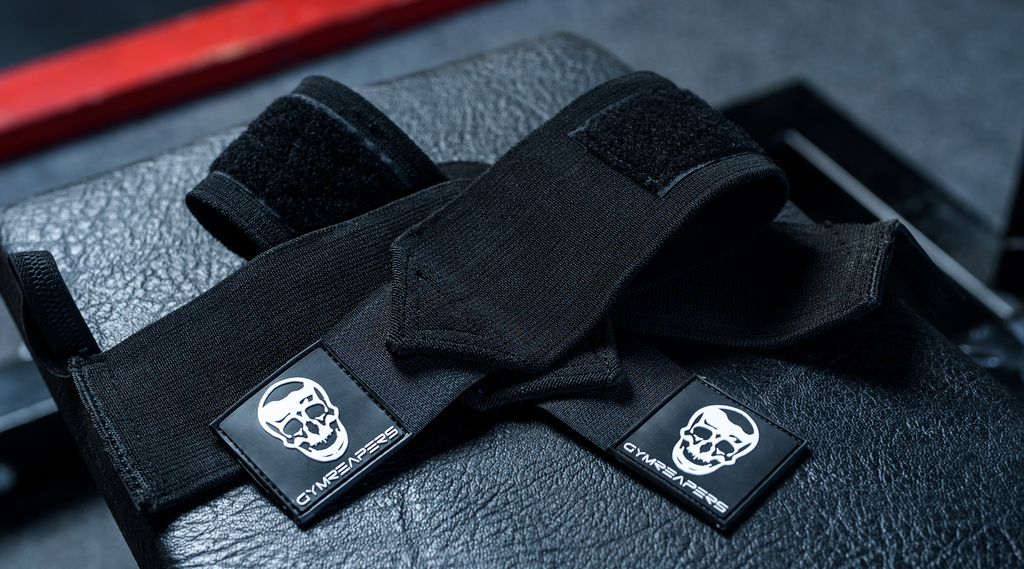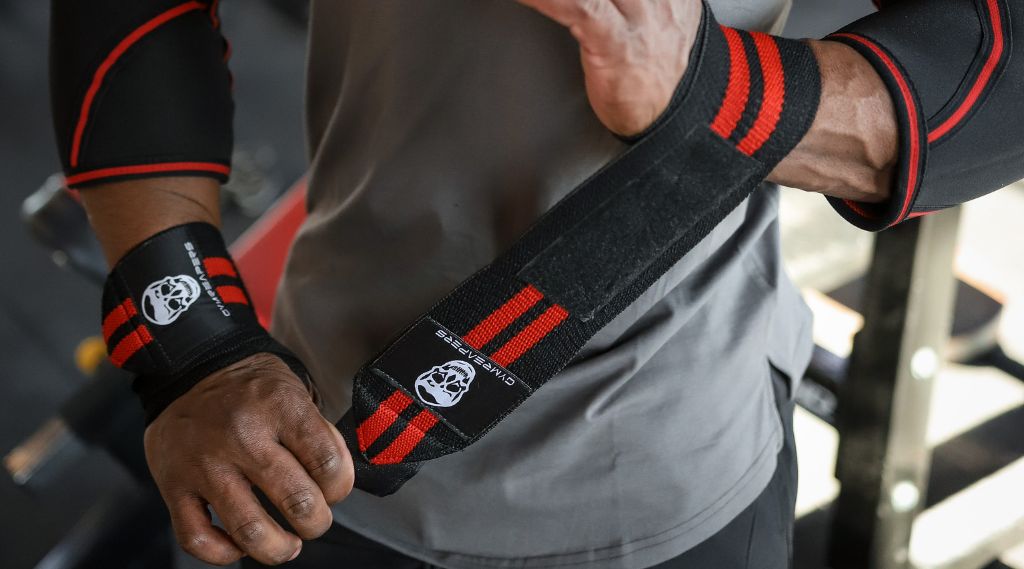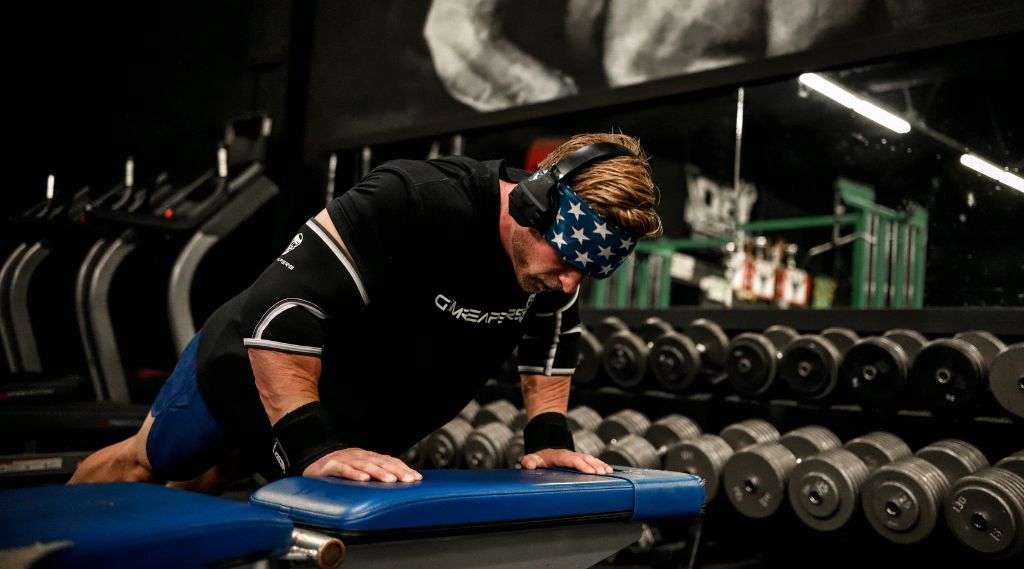When it comes to choosing between stiff and flexible wrist wraps, there is much debate and confusion.
While some argue that stiff wrist wraps offer more support and protection, others claim that flexible wraps provide a better range of motion and ease of use.
The truth is that both stiff and flexible wrist wraps have their place while lifting.
Stiff wrist wraps are perfect for powerlifters and those who want to increase max strength, used for specific lifts like squats, bench press, and overhead press. In contrast, flexible wraps are better suited for lighter lifts or exercises with more wrist movement, such as snatches and front squats, providing greater range and comfort.
Below, I will discuss the benefits and drawbacks of each type of wrap to help you make an informed decision.
Key Takeaways
Types of Wrist Wraps & Their Benefits

Wrist wraps are supportive pieces of fitness equipment that are used during exercise to provide compressive support for your wrists, improve your grip, and help protect the wrist joint.
At their core, every wrist wrap is a long piece of elastic or some other blend of material that you can wrap around your wrists to prevent excessive extension (bending backward) under heavy loads.
Since they act as a sort of cast that keeps your wrist stable, they are most often used for pressing movements like the bench press or overhead press. Using wrist wraps for these types of movements helps keep your wrists safe, can prevent injuries, and relieve aches and pains that build up over time.
The main types of wrist wraps to choose from are:
- Cotton. Tend to be thinner and more flexible. They are easier to stretch and wrap around your wrist, are more breathable, and are easier to air out.
- Nylon. Usually tougher, less flexible, and supported by cross-stitching and multiple layers of nylon. You may also see these wrist wraps made out of some type of elastic and polyester blend.
These are more frequently used by strongman and powerlifting athletes, as they are more durable and helpful when lifting very large amounts of weight.
Related Article: How Long Should Wrist Wraps Be
What Is The Difference Between Stiff & Flexible Wrist Wraps

The main difference between stiff and flexible wrist wraps is the amount of stretch each material has, which determines how supported you feel under heavy loads.
While this sounds simple, there is a bit of nuance to this distinction.
Typically, stiff and flexible wrist wraps share the same construction, but they really differ in the amount of elastic that is used.
For example, the Gymreapers 18” Weightlifting Wrist Wrap is constructed with a 30% Elastic, 70% Polyester material blend. Whereas, the Gymreapers Stiff Wrist Wrap is a stiffer alternative, made of a much more reinforced elastic material.
The practical takeaway of these construction differences is that, for the most part, flexible wrist wraps are able to be stretched out more, since they have a higher concentration of elastic and are similar to a stretchy fabric, like a tensor bandage.
Therefore, the flexible wraps usually give you more revolutions around the wrist than the stiff ones, which provides a tight and compressive fit that still allows for some movement of the wrist.
Stiff wrist wraps have more of a cast-like effect that doesn’t allow for much movement at the wrist joint and is more restrictive than flexible wraps.
Personally, I prefer the flexible versions of most wrist wraps for my powerlifting movements. The material that they are made out of is much more malleable and forgiving than stiff wraps, which means they can be more comfortable to wear multiple times a week.
That said, I do also own a stiff pair of wraps, but I usually reserve these for big lifts leading up to my competitions, or for the competitions themselves. Personally, I do not find them comfortable enough for everyday use, but I do love to take advantage of the cast-like nature and impeccable support when I can.
Related Article: Do Wrist Wraps Weaken Your Wrist & Forearm? A Coach Answers
Stiff Wrist Wraps

Benefits
Maximum Support
The biggest benefit of a stiff wrist wrap is its enhanced support and rigid nature.
Putting on a stiff wrist wrap is akin to casting your wrist. When wrapped properly, your wrist will be completely immobilized. This is ideal for those partaking in heavily-lifting workouts in which you are engaging in maximal effort work.
Longevity
Since stiffer wraps are made out of reinforced elastic material, and stiffer cotton, and have more durable stitching and seams, they often last longer than flexible wraps.
Typically the first piece of a wrist wrap to tear is the thumb loop. This is because the loop is used as an anchor to start wrapping, and it can begin to tear at the seam over time.
This problem is often negated by stiffer wrist wraps since the thumb loops are often reinforced and thicker with more durable stitching to reduce the likelihood of tearing.
Related Article: Do You Need Wrist Wraps With A Thumb Loop? Plus, How To Wear
Drawbacks
More Expensive
A key drawback to stiff wraps is that they are often more expensive than their flexible counterparts.
It is true that stiffer wraps are more durable and made from a more weighty and substantial material, which likely increases their manufacturing costs, but that does not change the fact that almost all stiff wrist wraps cost approximately $10-$20 more than flexible options.
Gapping
A frequent complaint with stiff wrist wraps is the fact that they are so stiff and rigid that, when wrapped, there can be noticeable gaps between one edge of the wrap and your skin.
This is a problem that does not occur as commonly with flexible wrist wraps since they are more malleable and can better conform to the shape of your wrist.
In contrast, just due to its nature, the much more cast-like material in stiff wraps is unyielding and will not conform to your body as well.
This can be a problem because when gapping occurs there is more room left for your wrist to bend and flex, which means your wrist isn’t as stable. This would defeat the purpose of buying a stiff wrap.
Uncomfortable
Since the materials of a stiff wrap are so rigid and unyielding, many people complain that they are much more uncomfortable than the softer fabrics of a flexible wrap.
Personally, I have noticed bruising or “bite marks” left on my wrists by my stiff wraps after a heavy set of squats.
It is rare that these marks last more than a day or two, and they are no more uncomfortable than the bruising left behind by a weight belt, but nonetheless, it is a side-effect you may experience.
More difficult to put on
Stiff wraps are much more difficult to stretch out and put on than flexible wraps.
Even with a stiff wrap, you still need to be able to stretch the material to its maximum capacity, so that there will be no slippage or unwanted motion at your wrist when lifting heavier weights. This is a much more difficult task to accomplish with a stiff wrap than with a flexible wrap.
Since they are much more difficult to put on, and are honestly quite a hassle to wrap properly compared to a flexible wrap, this can be a significant drawback.
Examples
A prime example of a stiff wrap is the Gymreapers Stiff Wrist Wraps - Heavy Duty Wrist Support, which is IPF-approved wrist wraps that provide incredibly heavy-duty support during your strength training sessions.
They are available in lengths from 12” to 24” and make great use of reinforced elastic material and stiff cotton to provide outstanding support, compression, and durability.
When To Use Stiff Wrist Wraps
In my opinion, stiff wrist wraps should only be used for very strong athletes in need of wrist support, who have the ability to “muscle” these wraps closed and prevent any chance of gapping.
Even then, I think that most athletes that compete in strength sports like powerlifting or strongman can make do with flexible wrist wraps unless they’re the best of the best and lifting exceptionally heavy loads.
That said, if you feel more confident using stiff wraps and your lifts are progressing then there is no reason for you to switch from stiff wraps to flexible wraps.
Flexible Wrist Wraps

Benefits
More Comfortable
One of the main benefits of flexible wrist wraps compared to stiff ones, is that they are much more comfortable.
The material is made of a much more malleable and forgiving blend that molds very nicely to the skin. The compression is more natural and less aggressive than stiff wraps, and I have not experienced any bruising or “biting” from flexible wraps as I have with stiff ones.
Additionally, the malleable nature of a flexible wrap combats the gapping issue that we find in stiff wraps. This means that a flexible wrap is often more secure to your skin, and will end up giving much less wiggle room in your wrist if it is wrapped properly.
More Revolutions
Another prime benefit of flexible wrist wraps is that you can often get more revolutions around your wrist.
In my opinion, the real support and effectiveness of a wrist wrap stems from its length and the number of revolutions that you can get around your wrist, rather than the stiffness of the material.
This means that often, a longer and more flexible wrap can give you a much more supportive feeling than a shorter and stiffer counterpart.
Cheaper
In contrast to the “Expensive” drawback of stiff wrist wraps, you can often find flexible wraps at a more reasonable price.
That said, I still caution against buying a strength training product solely because it is cheaper than a counterpart.
I recommend doing your research to make sure that the brand is reputable and the materials are high-quality so that you can be sure to get a product that will truly suit your needs.
Versatility
Finally, flexible wrist wraps offer much greater versatility than stiff wraps.
They are much more comfortable and easier to put on than stiff wraps, which means that you are able to wear them for more activities and for greater lengths of time.
I have found myself reaping the compressive benefits of my flexible wraps on multiple exercises rather than just pressing movements, simply because I already had them at the gym and they are comfortable to put on.
Certain movements like heavy rows, squats, or even push ups can aggravate my wrists at times, and a flexible wrist wrap is a great tool to alleviate some soreness.
Drawbacks
Less Durable
A key drawback to flexible wrist wraps is that they can be less durable than stiff wraps, simply because everything about a stiff wrap is incredibly well-reinforced.
However, this drawback can be minimized by buying a high-quality product from a reputable brand.
Many approved brands in the powerlifting world ensure the safety of their lifters by making their wraps undergo significant durability testing by world-class athletes.
This testing, coupled with the high-quality materials that are required to become approved by a federation can usually ensure that a flexible wrist wrap will still be plenty durable. It’s just up to you, as a consumer, to do your research and spend your dollar wisely.
More Room for Wrist Mobility
Unlike the cast-like, rigid, materials of a stiff wrap, flexible wraps can leave more room for wrist mobility.
This can be a drawback if you are aiming to lock your wrist in with absolutely no room for movement; however, this drawback can be minimized by buying a longer flexible wrap.
As I have said, it is my opinion that true stability comes not from stiffness, but from length and revolutions around your wrist.
So if your goal is to completely immobilize your wrist, I would recommend a tight wrap job with a long, flexible wrap, as opposed to a stiffer wrap that can be more uncomfortable and result in gapping issues.
Examples
A prime example of a more flexible wrap is the Gymreapers Wrist Wraps - 18” Weightlifting Wrist Support, which is long enough to cover the base of your hands and wrist, allowing you to immobilize your joint and reduce the risk of injury.
These wraps come in 9 colors, are both IPF and USPA approved, and are tested to perform under the toughest conditions so that they are guaranteed to outlast many other wraps on the market.
When To Use Flexible Wrist Wraps
In my opinion, flexible wrist wraps should be used by any gym-goer or strength athlete who doesn't press absurd amounts of weight, but would still like to benefit from a great wrist wrap.
Some of the benefits that an athlete may seek from a wrist wrap are greater stabilization, reduced risk of injury, and relief of pain or discomfort.
In my opinion, flexible wrist wraps offer all of these benefits for the majority of people and are able to do so in a much more comfortable and simple manner than stiffer wraps.
Frequently Asked Questions
Do Stiff Wrist Wraps Break In?
Stiff wrist wraps do break in very slightly after using them for at least 2 weeks; however, they still remain much stiffer and unyielding than any flexible wrap.
Can You Lift Heavier With Stiffer Wrist Wraps?
Stiff wrist wraps are thicker and use more reinforced materials, so they may provide you with more support and a more immobilized wrist joint than a flexible wrap. So yes, they can help you lift heavier, especially in pressing movements.
Do Powerlifters Use Stiff or Flexible Wrist Wraps?
The type of wrap you use is a matter of personal preference; however, most powerlifters opt for a flexible wrist wrap for daily use. Many very strong competitors also own a stiffer pair for heavier training days or for competition purposes.
Final Thoughts
To wrap up this article, I believe that most people looking to purchase a pair of wrist wraps would benefit tremendously from a flexible pair like the Gymreapers Wrist Wraps - 18” Weightlifting Wrist Support.
Wraps like these provide great benefits regarding stability, injury prevention, and durability, but they do not make you sacrifice comfort and will not break the bank.
Stiff wrist wraps have their place and can be quite beneficial for some, but the majority of strength athletes will find more value in a flexible wrist wrap.













Leave a comment
All comments are moderated before being published.
This site is protected by hCaptcha and the hCaptcha Privacy Policy and Terms of Service apply.